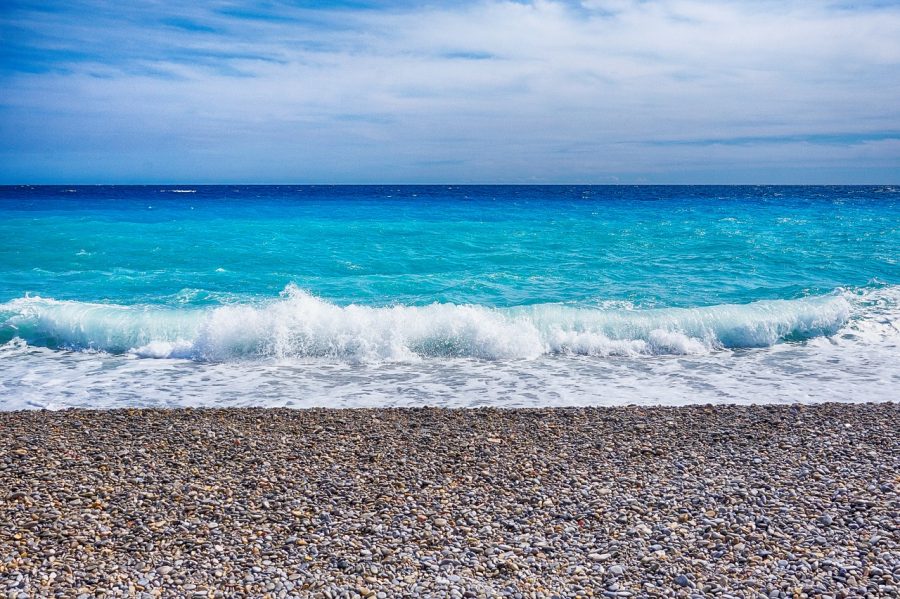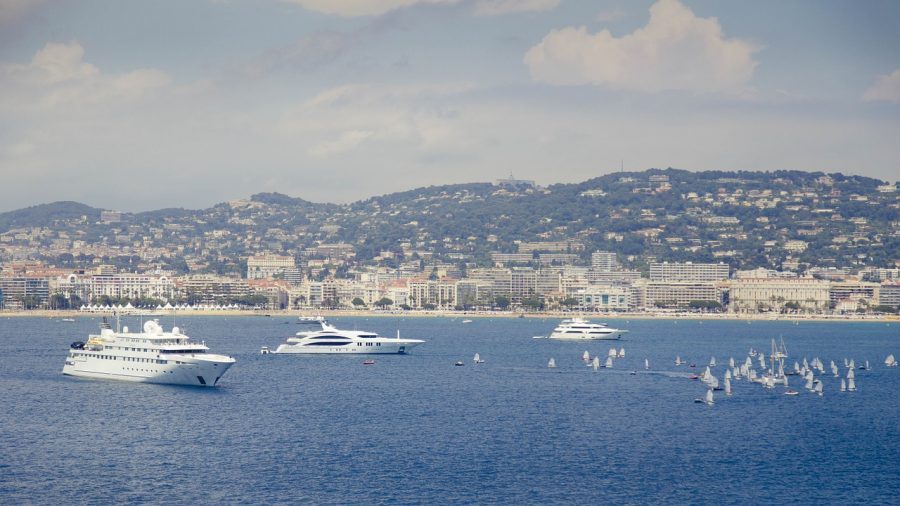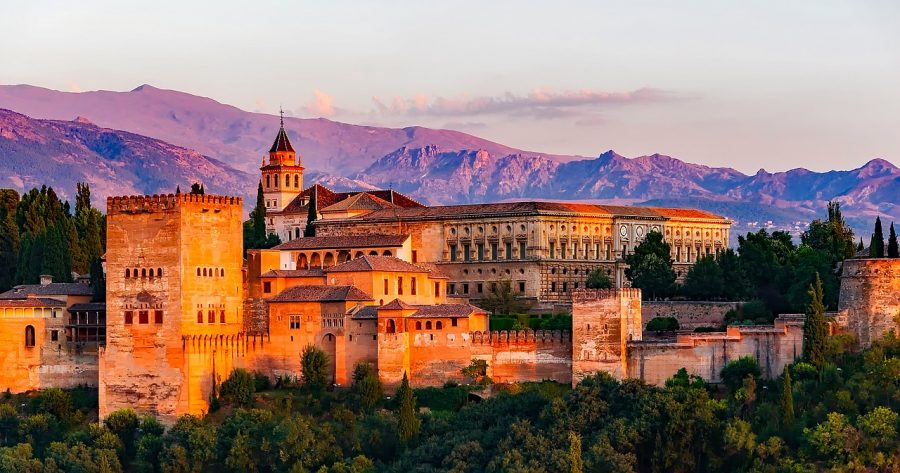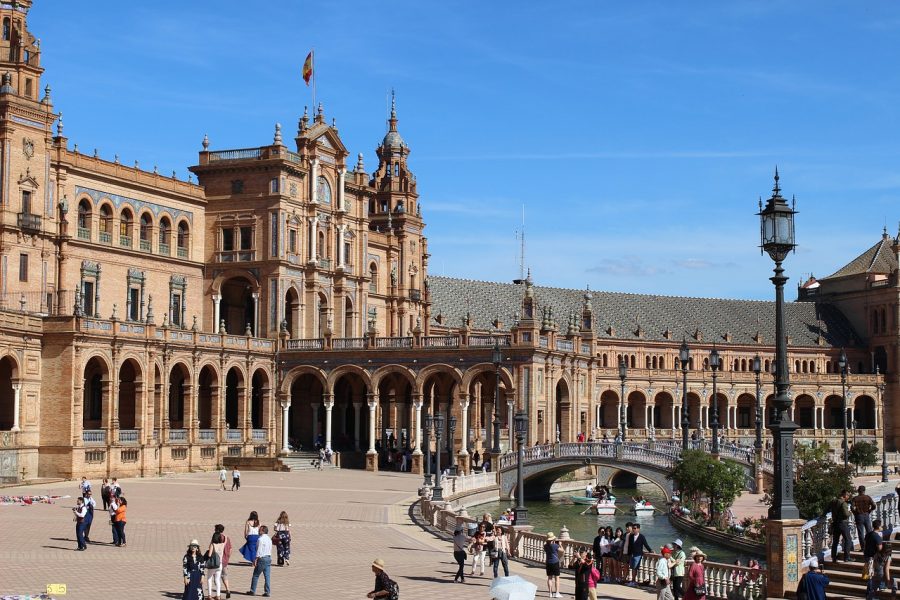Both the south of France and south of Spain reach out to the Mediterranean Sea, making them idyllic destinations for travellers seeking an authentic European or Mediterranean experience. They each have so much to offer in terms of beaches, culture, food, history and unforgettable experiences, but which one would suit your preferences most?
If you absolutely had to make a decision between the two, which would you opt for, Southern France or Southern Spain? Let’s find out.

Southern France
One of the main reasons why the French Riviera is such a popular destination is because of the wonderfully balmy weather it experiences year round. The summer months are particularly busy, especially June, July and August, where advanced bookings must be made for everything, but September and October are divine too.
Southern France is most well-known for the French Riviera, which is a stretch of coastline in Provence that reaches from the Italian border towards Marseille. Here you will find the throbbing cities of Nice and Cannes, both destinations for the rich and famous, as well as the latter playing host to the infamous annual Cannes Film Festival.
To the west of the French Riviera and Marseille is the province of Languedoc-Roussillon, more commonly referred to as Languedoc. This stretch of Mediterranean coastline is as beautiful and temperate, but not as busy as its easterly counterparts.
One of the highlights and hidden gems of Southern France is the Carrières de Lumières (Quarries of Lights) in Les Baux de Provence. It is a fully immersive multimedia experience held inside former bauxite quarries that has to be seen to be believed. I don’t think anything like it exists elsewhere in the world. Eze for me was also a highlight. I decided to go there on a whim and now it’s one of my favourite cities in Southern France (although it’s hard to pick favourites because I love the entire region). The cactus garden with its hill top view of the Mediterranean Sea there is a must see!
My advice is to rent a car because part of the charm of Southern France is seeing the countryside, seeing the rolling hills filled with hay bales, sunflower fields and lavender fields and passing by smaller villages… they can’t be seen if you’re just catching the train. Another tip is to make sure you visit all the markets. There are so many markets featuring amazing, fresh produce but also textile markets featuring beautiful clothes and homewares at amazing prices. – Livia, Chamelle Photo and Travel
South Of France Food And Drinks
Dining outdoors is essential in the south of France and there are loads of delightful eateries all vying for your attention. Food is an art in France and each detail is lovingly prepared for your ultimate satisfaction. Pair your meals with local wines and you’ll never want to leave! While we cannot possibly mention all the best restaurants to visit, we do think you must look out for the following foods and culinary experiences:
- Coffee and a pastry at a roadside café
- Olive tapenade and fresh bread with some local wine as the sun goes down
- Warm socca (chickpea based flatbread) with a glass of Rose
- Bouillabaisse, a seafood based fish stew that is bursting with fresh flavour, preferably eaten along the coast
- Fresh apricot tart, enjoyed in the leafy courtyard of a picturesque village restaurant
I traveled to Narbonne all by myself and not once did I feel lonely during my stay. People in Southern France are incredibly friendly – especially if you speak a little French. Dining alone can be quite an uncomfortable experience, especially fine dining. I wanted to enjoy high quality regional cuisine and ended up going to a quite romantic restaurant. Alone. The staff sensed my discomfort, as I was the only one there who didn’t have a plus one. They brought me a bunch of magazines, placed them in front of me, and came over to my table to chat with me. It was such a considerate thing to do, and I did not expect that at all. I experienced the same level of service at the bed and breakfast I was staying at in Narbonne. First of all, it was the most charming b&b I’d ever been to. And the staff was amazing. I spent a lot of time chatting with one of the owners, a young lady who’d been traveling around the world and studying abroad before returning to Narbonne to run the b&b with her parents. On the day of my departure, she offered to take me to the train station so I wouldn’t have to carry my luggage – even though it was just a ten minute walk! I was amazed by the kindness of all these people. I came for the food, the wine and the nice weather – but next time, I’ll return for the people.Go for cheaper accommodation so you’ll have more money to spend on food. Seriously. You have to try the regional cuisine. Mediterranean food is amazing. So is the wine from the south of France. Schedule in a wine tasting at a château in the countryside, or visit one of the wine bars downtown in the city you’re going to. Want to pick up a souvenir? Look for those small glass jars of tapenade (spread made with green olives or black olives). Spread it on toasted bread, crackers or slices of baguette. Best enjoyed with a glass of wine.Yum!Another tip; it’s okay if you don’t speak a lot of French – the locals will try to make efforts. Don’t believe what you’ve heard about French not wanting to speak English. In most cases they’re either shy or they actually can’t speak the language. To make things easier for you, you should at least know “bonjour/bonsoir” (good day/good evening), “au revoir” (bye), “merci” (thanks), “parlez-vous anglais?” (do you speak english?) and “je ne parle pas francais” (I don’t speak french). – Kristine, Explore Love Travel

South Of France Attractions
- Take a stroll along the Boulevard de la Croisette in Cannes, even if you can’t afford to buy anything from the boutiques!
- Walk the streets that form part of the infamous Formula One racetrack that plays out in Monte Carlo every year.
- If you want something a little off the beaten track then take a day to explore the cliffs and inlets of Massif des Calanques, a strip of rugged coastline that stretches for 20km between Marseille and Cassis. Known as the Cote d’Azur’s wild side, it’s the perfect destination for walks, hikes, kayaking or swimming in crystal clear inlets.
- For your fix of art and culture, take some time to marvel at the Notre-Dame de la Garde in Marseille. This Catholic basilica is architectural splendour at its best dating back to 1864.
- Continue your journey of historical landmarks in Languedoc-Roussillon with a trip to the Maison Carrée, the restored Roman temple that was first completed in 2AD.
- Be sure to take in one or two of the picturesque wine farms in the Languedoc region, this area is renowned for them.
My highlight was staying in the middle of the Camargue, a marsh area in southern France where I felt completely in tune with nature. The stars were our only light source, as soon as the night fell a deafening concert of croaking frogs started, followed by a chorus of crickets buzzing in the background. During the day we saw thousands flamingos, wild boar, black bulls, dragonflies, herons, as swimming beaver and of course the famous white Camargue horse. It was breathtakingly beautiful.
Tip: In the summer it can get blistering hot in the south. Make sure you pack accordingly: always bring water and wear sun protection (hat and sun cream). – Stefania, Views of the World

Southern Spain
- If you’re visiting the south of Spain, most people will recommend that you head straight to the area of Andalucia, especially if you’re strapped for time. Andalusia makes up most of the southern part of Spain, and a grand portion of it is along the Mediterranean coast. It’s renowned for hot temperatures, some of the hottest in Europe, and here you can find magic in Seville, Granada, Malaga and Córdoba.
- Seville, Granada and Córdoba make up Andalucia’s Golden Triangle of three highly travelled and adventured cities within a few hours drive from one another.
- Malaga is the beach haven you’re looking for to add the cherry on top of a perfect holiday. Malaga is also home to a number of intriguing museums offering a little bit of every subject available, from art to archaeology to automobiles.
- Barcelona is quite a bit further east towards France. Although it’s an incredible experience and a must-visit at some stage in your life, it is quite a bit more expensive and requires a holiday in itself to fully explore and become immersed in.
South Of Spain Food And Beverages
Much like the south of France, southern Spain has a vast array of gastronomic delights for you to feast on, but there are far too many to make mention of them all. Al fresco dining is also a must in Spain, especially if you’re there in the summer months. These are the dishes and culinary experiences we think you should seek out:
- Sample some salmorejo in a quaint Andalucian eatery. It’s a thick, creamy tomato and bread soup, garnished with chopped ham and boiled eggs
- Enjoy some fresh, grilled octopus on the beachfront in Malaga, coupled with a glass of white wine
- Pair some local wine with an arrangement of cheeses, figs and fruits
- Anything with extra virgin olive oil… most of the olive oil made locally ends up being bottle in Italy and sold as Italian oil
- Gazpacho is a delicious cold, spicy tomato soup and is especially refreshing when the temperatures are hot
- A paella night must be set aside for slow eating and appreciation
- Make time to go to a tapas bar in Malaga

South Of Spain Attractions
There is a distinctive Moorish element to the south of Spain and it’s all embracing. For a taste of it, visit the Alhambra Palace in Granada, which has been declared a UNESCO World Heritage Site. Also take some time to visit the Royal Chapel of Granada for an entirely different take on architecture, but one equally as beautiful.
For your beach day – because there has to be at least one beach day – you definitely need to spend some time in Malaga. Cocktails or al fresco dinner overlooking the sea would also make for a grand ending to your day and the best place to do this would be Refectorium El Campanario in upmarket Cerrado de Calderón. While in Malaga, it’s also well worth your time visiting the Museo Picasso Málaga, which is a collection of Picasso’s works in a magnificent, palatial setting.
In Córdoba, there are a number of chapels, palaces, museums and landmarks that will vie for your attention. Alcázar de los Reyes Cristianos is a palace dating back to the 1300s, a tranquil escape that offers magnificent terraced gardens, intricate art and architectural wonders. Don’t leave Córdoba without making a trip to the La Mezquita, a captivating mosque that has been standing since 784AD. The mosaic work in the mosque is something that will take your breath away.
So we’ve given you a taste, now which one would you want more of? Southern France or South of Spain?


